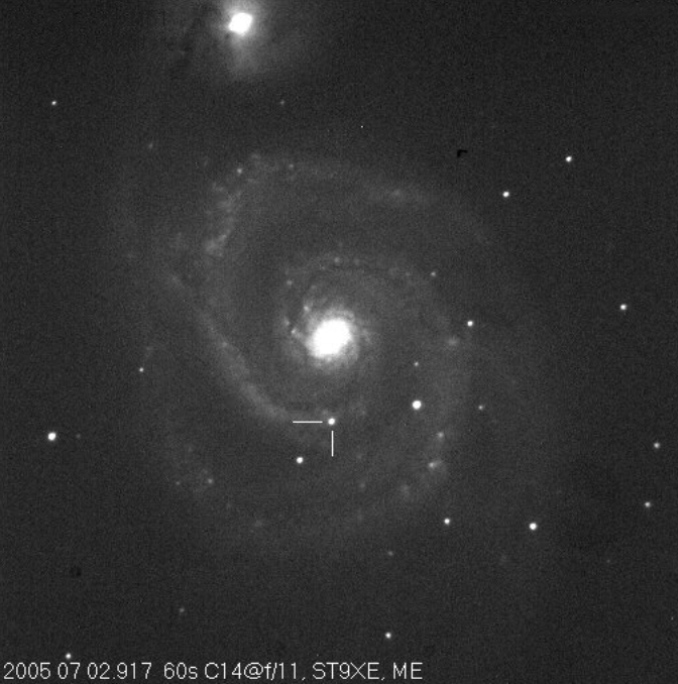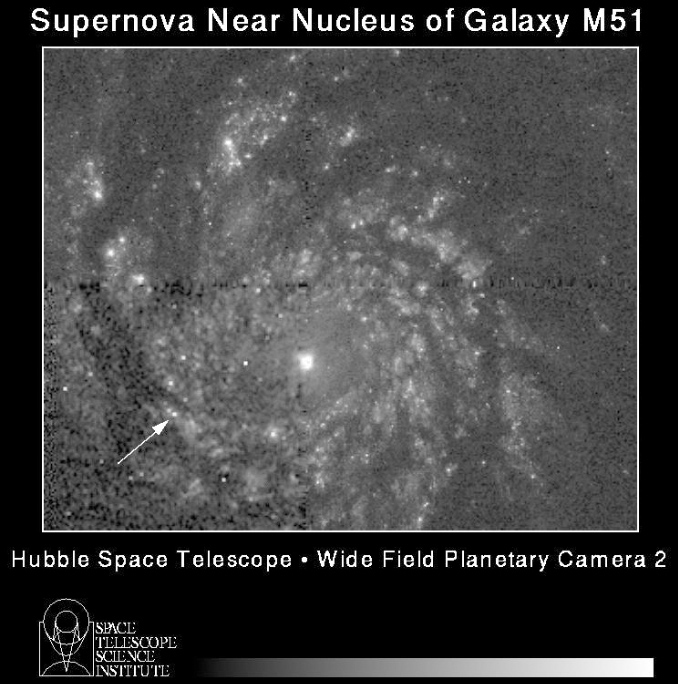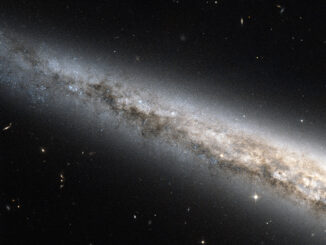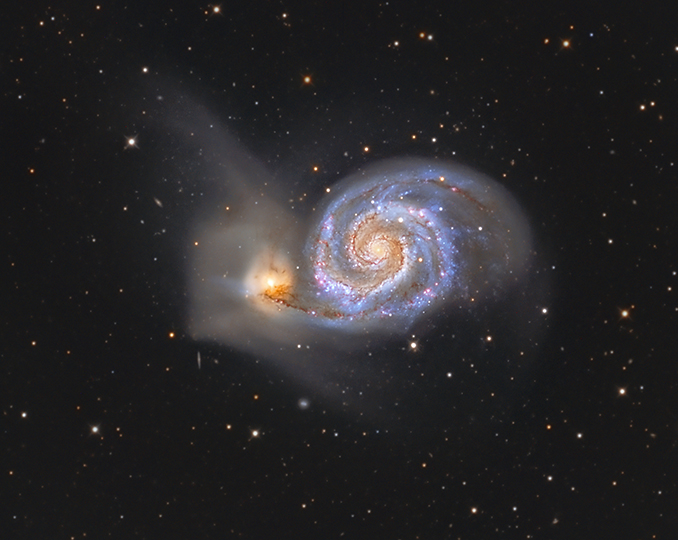
Magnificent Messier 51 (NGC 5194), the Whirlpool Galaxy in Canes Venatici, is without doubt the best and most famous example of a spiral galaxy that is presented face-on to our perspective. Indeed, probably only Messier 31, the Great Nebula in Andromeda, is a galaxy as popular and as well-known.
Shining at magnitude +8.1, it’s not too hard to track it down and observe it; from a suburban location, Messier 51 can be seen through a small telescope, while at semi—rural site it can be captured in a humble pair of 10 x 50 binoculars as a small hazy patch. Gazing at it through a high-power eyepiece coupled to a 200–300mm (eight- to twelve-inch) telescope sited under a dark, countryside location, some traces of the splendid spiral structure – so familiar in deep images – can be gleaned.
How to observe
Messier 51 has the distinct advantage of being circumpolar (never setting) from mid-northern latitude. Lying in the north-eastern quadrant of the constellation of Canes Venatici (CVn), it culminates at around the zenith at around 11pm BST on mid-May nights, meaning that it’s on show throughout the hours of darkness.
It’s easy to track down Messier 51; from Alkaid (eta Ursae Majoris, mag. +1.8, the end star of the Plough’s handle, sweep just over two degrees west to locate 24 CVn (mag. +4.7) and then head two degrees south-southwest to land on Messier 51.
In common with other face-on spiral galaxies, M51 suffers the affliction of low surface brightness of its spiral arms, rendering them harder to spot in a hazy, moonlit or moderately light-polluted sky. Whichever optical help you press into service, wait for a fine, transparent night. On such a night, some spiral structure should start to materialise across its 11′ x 8.7’ form through a 250mm (10-inch) telescope, but to approach Messier 51’s majesty so gloriously captured in deep amateur images will require the resolution and light-grasp of very large amateur telescopes, such a behemoth Dobsonian in the 400mm (16-inch) class.
The Moon is new at the end of May, so this is a good time for seeking out M51. If observing through a telescope, use as high a magnification as local conditions permit and the neat trick of averted vision will help you see it.
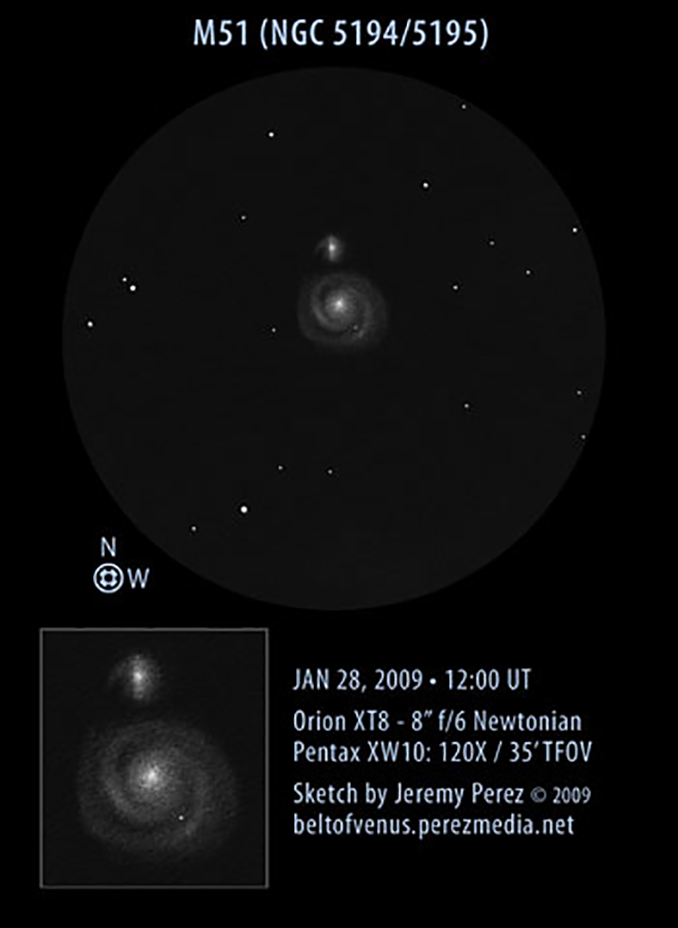
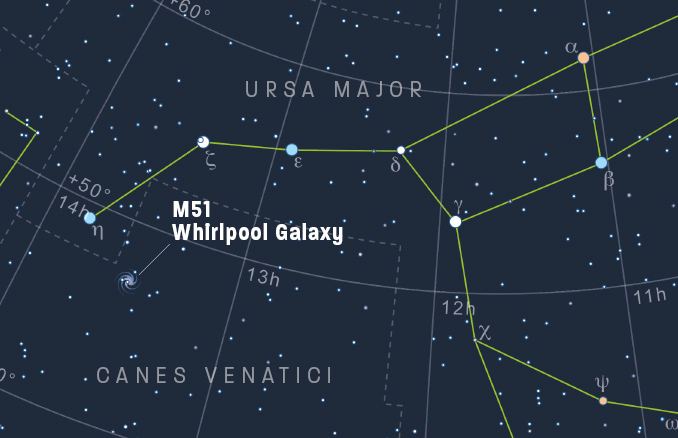
A storied spiral
The Whirlpool Galaxy is one of the most imaged, observed and written about deep-sky objects since it was discovered by Charles Messier on 13 October 1773. He saw the brighter of the two cores, the galaxy merely as a faint nebulous patch in northern Canes Venatici, just south of the bright stars that make up the Plough’s handle. The Whirlpool’s companion galaxy, the fainter core, was discovered by Pierre Méchain in 1781 and was later catalogued as NGC 5195.
At the time of their discovery, the true nature of these ‘nebulae’ were unknown. It wasn’t until 1845 that their story became a little clearer; the Third Earl of Rosse, William Parsons, using the impressive 72-inch Leviathan telescope at Birr Castle in Ireland, saw spiral arms emanating from NGC 5194, the first time anyone had seen such structure.
Of course, it required twentieth-century advancements to finally reveal that the spiral ‘nebulae’ were galaxies lying millions of light years away from our Solar System, well beyond the confines of our own Galaxy.
Today we appreciate that NGC 5194 and 5195 are a pair of interacting galaxies lying 23 million light years distant, with a million solar mass black hole lurking at M51’s heart.
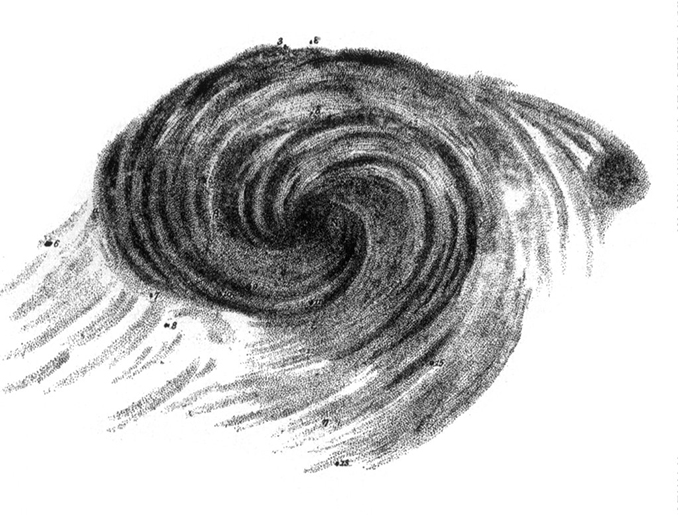
M51’s fireworks
M51 and NGC 5195 is a fertile hunting ground for astronomers seeking out supernovae, the titanic explosions of stars within individual galaxies that can be detected across the vastness of intergalactic space. Four supernovae have been discovered so far; 1945A in 1945, 1994I in April 1994, probably most memorably for UK amateurs, 2005cs in June 2005 and most recently, 2011dh in May 2011. Imagers would do well to carefully check those images for these valuable, fascinating and transient interlopers.
